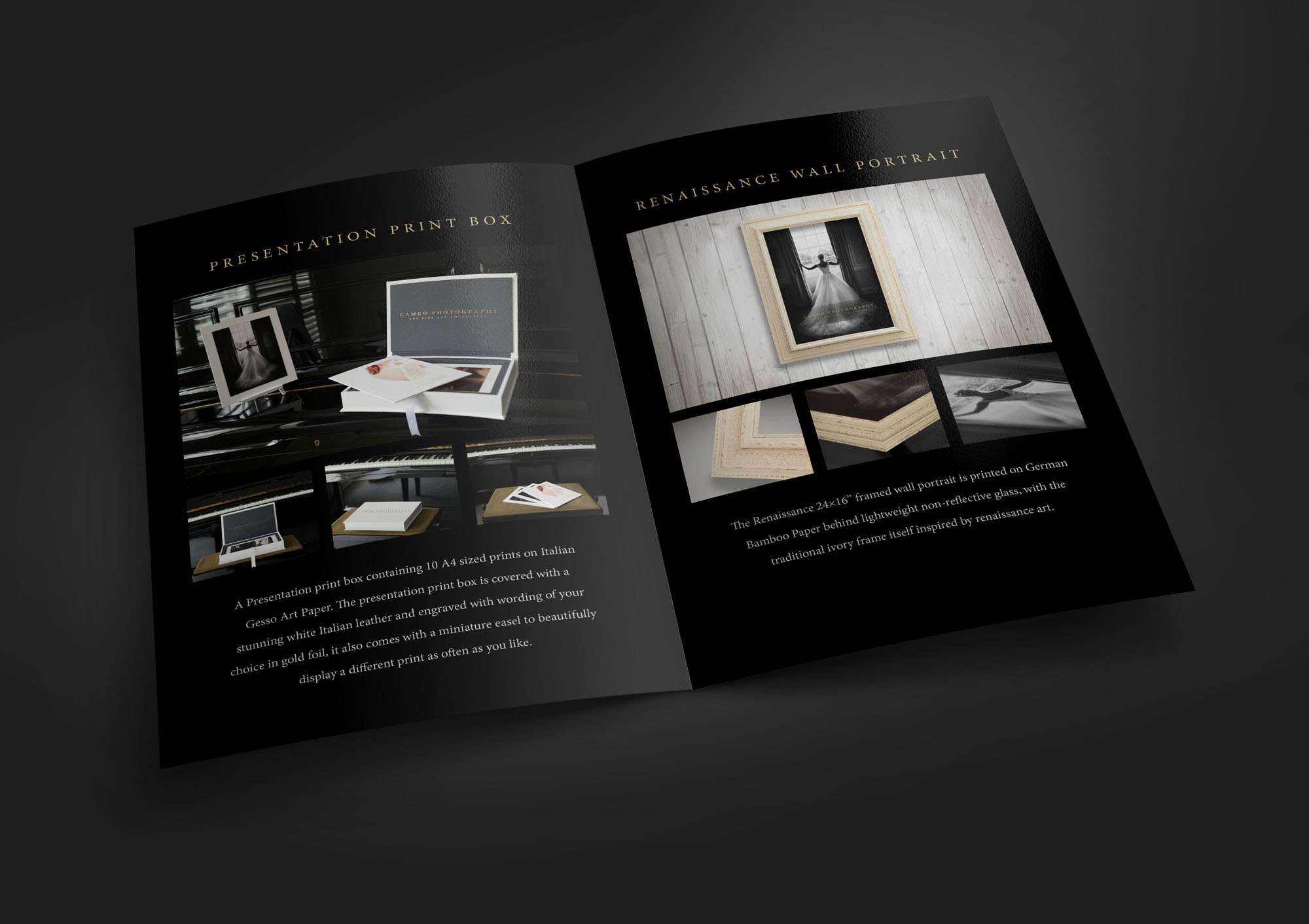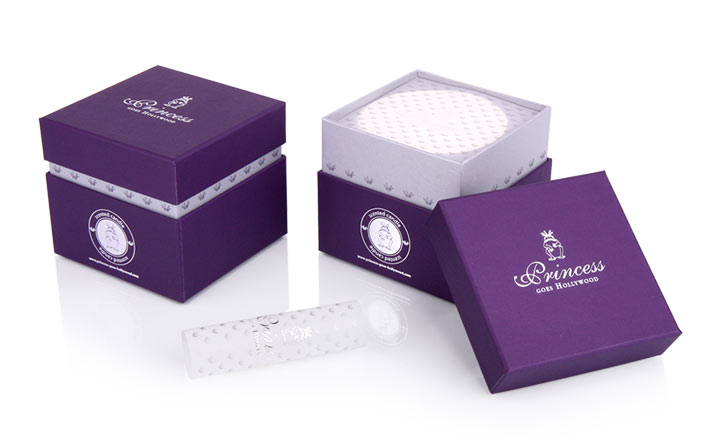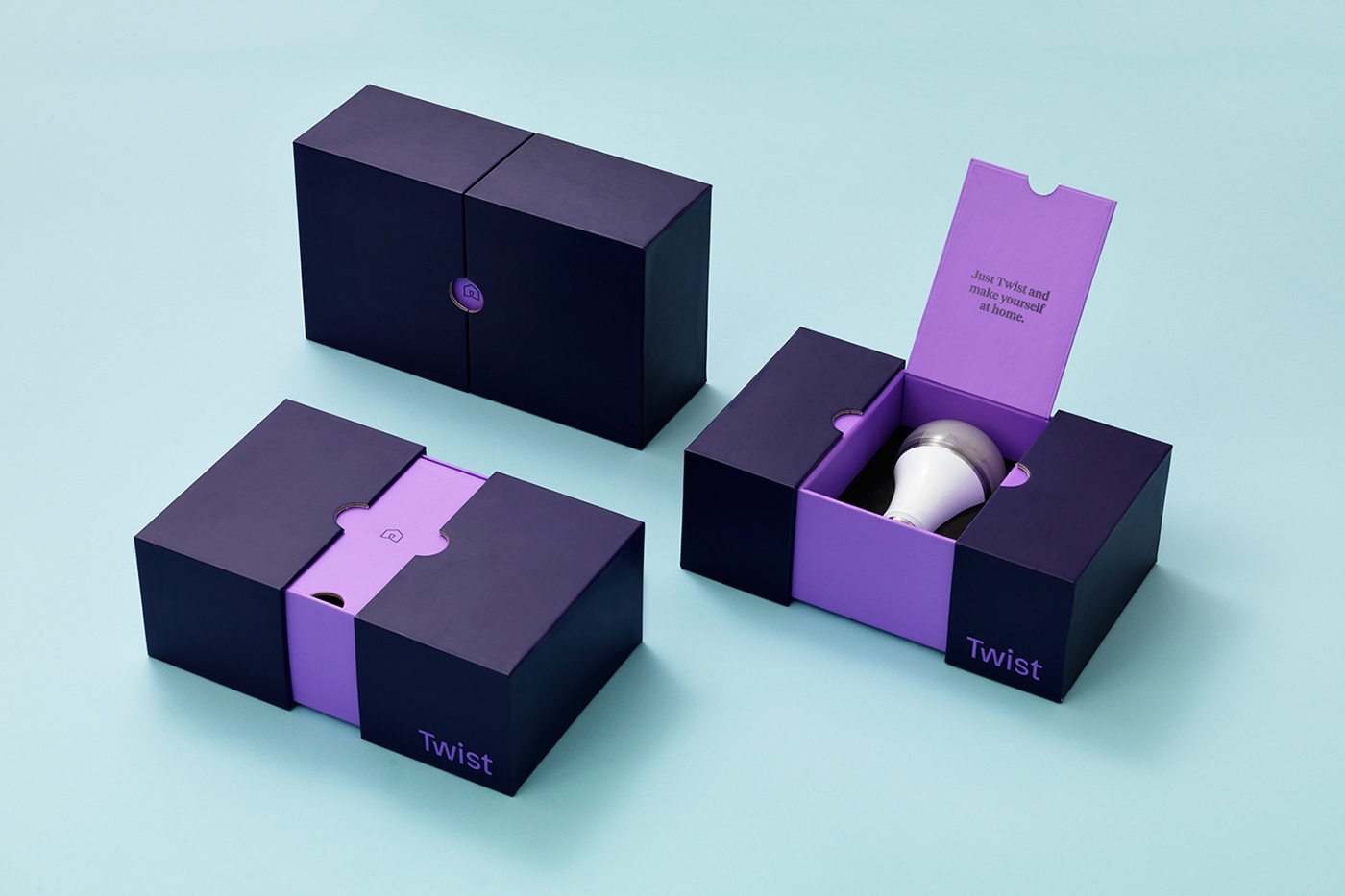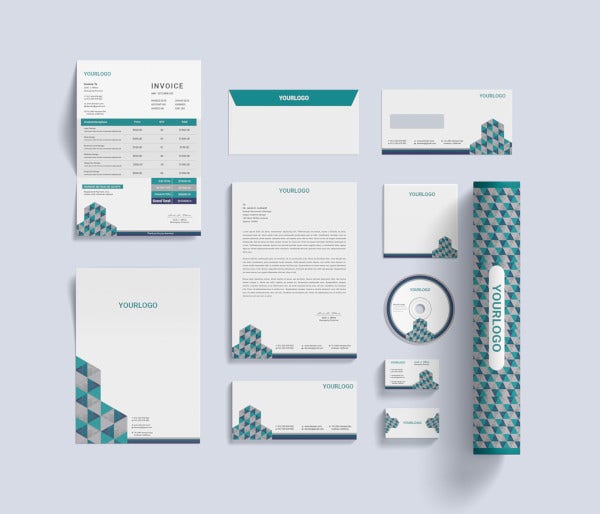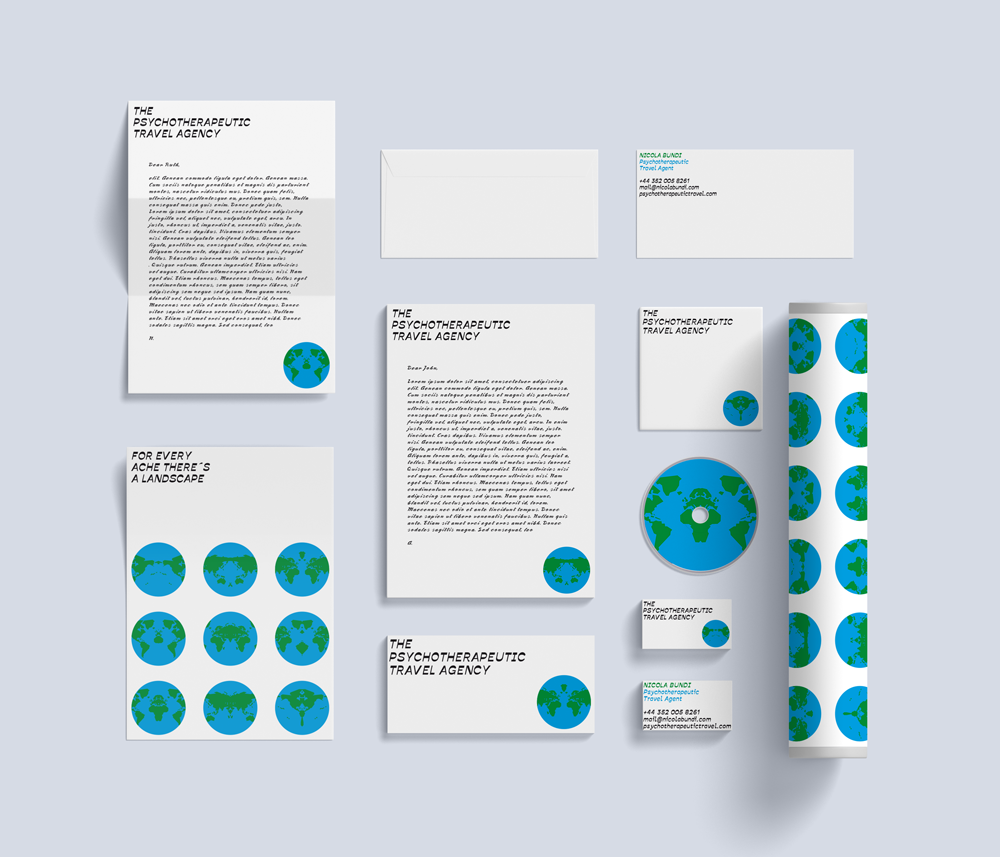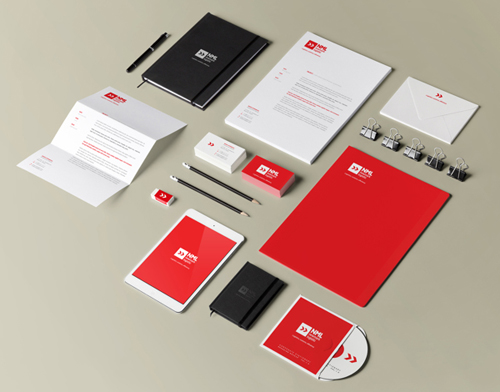Branding
Table of Contents
Why is Branding important?
Every brand has a story to tell. And the more intoxicating the story, the more engagement and loyalty you get from your audience. So our Branding Team help craft a brand story that’s authentic, relevant and unique. One which flows in a way that stirs up emotions and solidifies connections across a myriad of touchpoints. Becoming the embodiment of the brand that’s emboldened to endure over time.


How do we do it?
Once our strategies are set, our super-creative team at Mediategic begins to design eye-catching mouth watering visuals that make our client’s competitors thirsty for what they have. From Websites, Web Apps, Digital Creative, Mobile Apps to fresh looking brand identities and corporate logos, Mediategic stays on the cutting edge of visual design. On top of that, our founder, Mr. Al Mazrouei is a Webby Awards judge, so our design work has to be great.
Brand vs. Branding vs. Brand identity
First things first—what, exactly, are the three B’s?
Your brand is who you are as a company—and, just as importantly, who your audience perceives you to be as a company. It’s your products, your services, your mission, and your values.
Branding is the act of shaping that brand perception; it’s the actions you take to make sure the way your audience perceives you is in alignment with the way you want to be perceived.
Your brand identity is all the elements you create (like your logo, tagline, colors, business card, and website) to communicate your brand to your audience.
Still not clear on the difference between the three? Here’s an example.
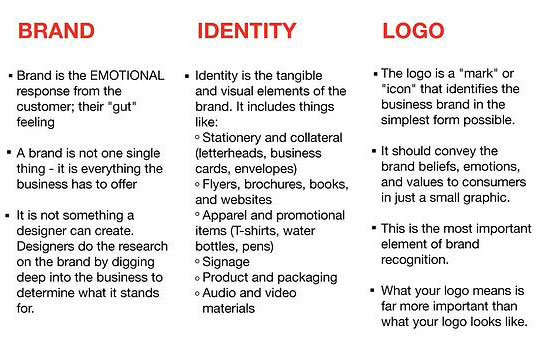
Let’s say you’re launching a new financial services company, and your mission is to provide the highest level of customer service and transparency to your customers. That’s your brand.
So, to promote your financial services company, you host a series of events where you educate potential customers on common financial issues, how to avoid them, and how your company can help them throughout the process. When a potential customer attends those events, it’s going to shape the way they perceive your company and get them on board with your brand. So, the actions of planning and hosting the events? That’s branding.
Finally, you need a concrete way to express your brand. So, you get your brand elements in place, from your logo to your website, your business cards to your brand color palette. All of those elements come together to form your brand identity.
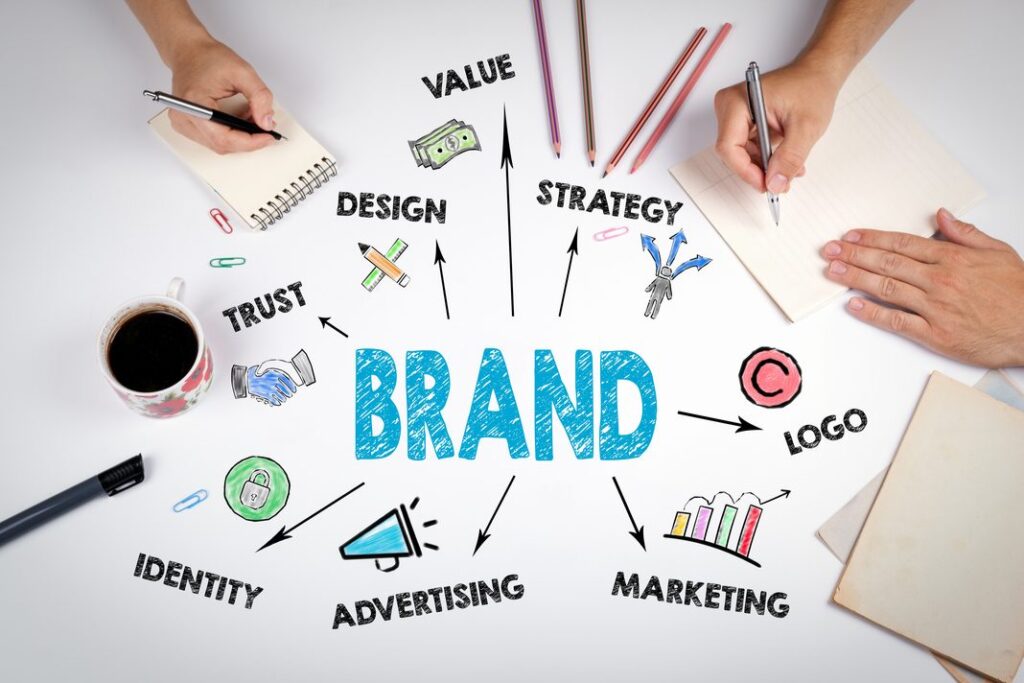
How does each one work to enhance your business?
Now we know, branding is the foundation of your brand, and brand identity is the visual execution of your brand strategy. You can’t have one without the other.
Branding is the strategy you use to shape how you want people to interact with your company. It’s how you want them to feel and the messaging you want to communicate to them. These concepts dictate the strategy for your brand identity.
Brand identity is the tangible look of the brand based on the Brand Strategy overview you created at the foundation of your brand. It’s how you want to visually communicate. It includes your:
- Logo
- Colors
- Monograms
- Typefaces
- Slogan/taglines
Your logo is the most important element of visual brand recognition and should serve to enhance your identity when used as a design element.
While you can hand your identity creation off to a graphic designer, it’s important that a strategy team creates your branding. Designers are not trained in strategy and instead need to base their ideas off the foundational concepts you create that define your brand.
Remember, you can’t have a strong identity without brand strategy to anchor it, and you can’t have a great brand without a strategic visual identity. Master the art of both and your marketing will see success!
Learn more about The 7 Essential Questions to Define Your Brand
Brand Identity
First impression is everything. Make sure it’s love at first sight, when your client encounters your brand.
By having a consistent visual language that is present across all of your brand touchpoints, you’re giving your customers the chance to get to know you.
Your branding isn’t just the visuals that people associate with your business. That’s your brand identity design.
Your brand identity gives people an easy way to identify you, and therefore, it should always be handled professionally.
Learn more about Branding, Identity & Logo Design Explained
This is the branding deliverable that most people want to skip straight to and consists of:
1. Naming
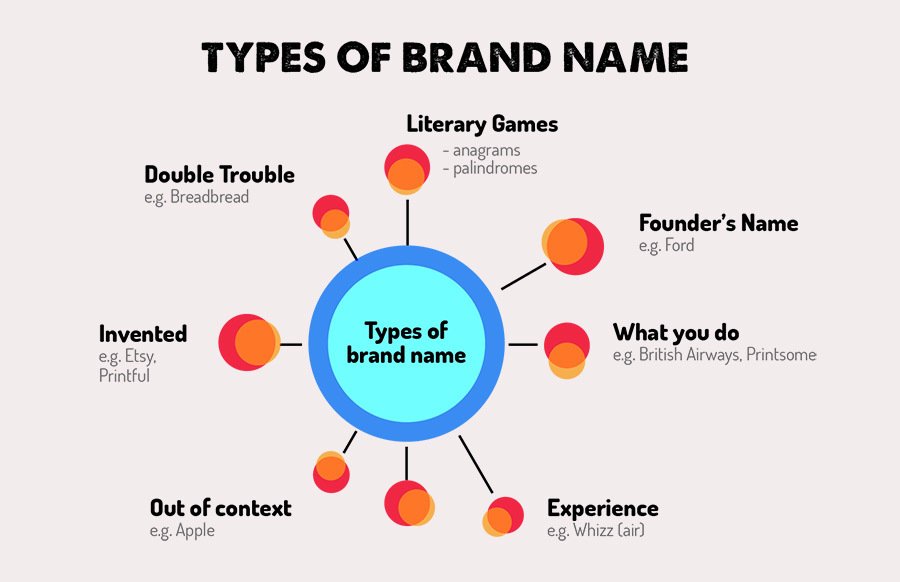
The brand naming process is one of the most critical parts of your brand building strategy.
Without a memorable name, how could your company attract the attention and adoration of your target audience?
Today’s consumers use brand names for more than just defining their favorite brands. The right title can improve your chances of earning new customers, by showing people the fundamental values you stand for.
Your brand’s name needs to linger in your customer’s mind. It is the face of your company. Names have power, so make sure yours is a powerful verbal reflection of your essence, values and character.
Every business needs a name. There’s no way of getting away from that.
New businesses need to create one and existing businesses might be considering a change.
There are a lot of different ways to name your business:
- Owners names/name (Adidas, founder Adi Dasler)
- Ingredients (Coca Cola, coca leaves, cola berries)
- Metaphor (Nike, the Greek Goddess of Victory)
- Shortening (Intel, short for integrated electronics)
The list goes on and on.
If you’re stuck with naming your brand, then you’ll want to get help from a naming professional.
These days, a name means less than it used to. It’s all about the power of branding.
Nike would’ve been nothing without their branding efforts and marketing spend.
Naming is tricky business, and having a catchy name gives you great brandability when it comes to domains, social media handles, slogans etc.
But, it’s not the be all and end all if you can’t get the “perfect name.” Perfect is unachievable.
Once you have a name, you can work on your branding to build brand equity, and suddenly your brand name will blossom.
2. Logo
A Brand Logo can be described as the face of a company and quite often, it is the first thing that a potential customer will notice about your business and its overall operations.
A logo is much more than just an image and it is a point of recognition for clients and an important foundation for the branding of your company and the entire brand architecture.
It is often said that customers form an opinion about a company within a fraction of seconds and a well-designed logo is an easy way to convey to potential and target customers that your business is professional, trustworthy, and provides quality goods or the best levels of customer service and overall experience.
A logo communicates your brand’s core values. It is something your loyal customer expects to notice among numerous competitor logos, as it is so much more than a work of graphic design art. It is your primary identification tool.
Mediategic can help design logos that do more than just catch someone’s eye – they establish a clear identity and demonstrate core business values. Whether a company wants to stress its historic legacy, cutting-edge and disruptive ideas or no-nonsense professionalism, logo design services can craft a perfect visual representation of those principles.
Types of Logo
When you’re looking to build a strong business or organization, a solid logo and branding design is a must.
A well-designed logo can can create loyal followers through simplicity and memorability. Be aware that a logo is the visual representation of a company or brand’s values, beliefs and functions. When designing one, you need to make sure it will represent the business the right way. There are many considerations to keep in mind such as:
- How the logo will look on products
- How it will appear on advertising and marketing materials
- How it will tie your other branding collateral together
- The thoughts and emotions someone feels when they see your logo (This is weird to think about, but certain colors, shapes, styles and words all trigger emotional responses which will translate into an emotional response to your business.)
It’s an entire package, not just a small mark. In most cases, it will be the first thing your customers or clients see when they come across your business. No pressure, right?
There are a number of ideas floating around about what a logo really is. If we were to ask most people what a logo is, they would have a variety of different answers, but they would probably all be right in one way or another. The reality is, there are a number of different types of logo “marks” you could choose to utilize for yourself. In this article, we’ll briefly explain the 5 main types of logos and show some examples of each you’ll probably recognize.
Symbol or Icon
This type of logo represents the company in a simple but bold manner. In most cases, the image is abstract and stylized to give visual interest. Most companies that use this type of logo will have a very simple main logo, but may choose to create additional alternative versions that appear a little more flashy. The human mind can easily remember a simple form much easier than a complex one. It’s best to use a simple symbol or icon if you plan on building a large business. You probably recognize symbol logos like Apple, Shell and Mercedes-Benz.
Examples of logos considered to be symbols
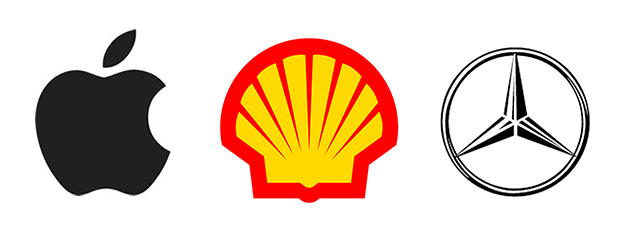
Word Mark
These are uniquely styled text logos that spell out the company or brand name. Many times, custom fonts are created specifically for brands to use across all their marketing and branding collateral. Some examples include Facebook, Disney and Sony.
Examples of Word Mark Logos
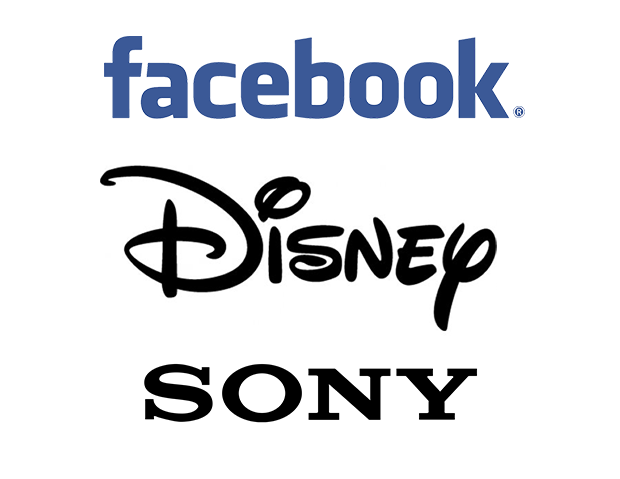
Letter Mark
Letter marks are exclusively typographic. They use a symbol representing the company through the use of its initials or the brands first letter. Many companies choose to use this type of logo because their initials can better graphically illustrate the company better than the full name (name is too long), the name is hard to pronounce, or it’s just not distinct enough to carry its own weight. Some companies and organizations that use letter marks include Hewlett-Packard, Chanel and General Electric.
Letter Mark logo design examples
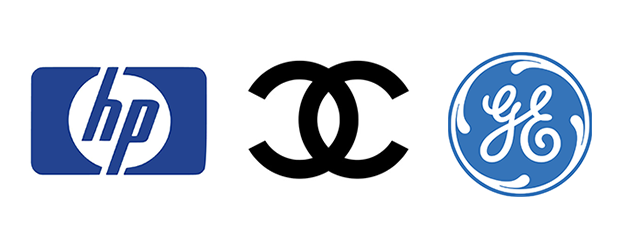
Combination Mark
These logos combine a wordmark and a symbol or icon to give the flexibility for the use of either or both elements across a variety of applications. A well-designed combination mark looks just as good with the elements separate as it does with them together. You might recognize some combo marks like Hawaiian Airlines, Adidas and Sprint.
Combination mark logo type examples
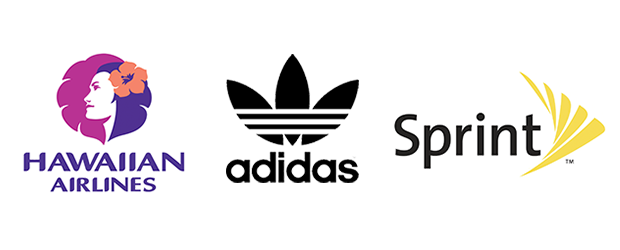
Emblem
An emblem logo encases the company name within the design. Some examples include Starbucks, the NFL and Harley-Davidson Motorcycles.
Emblem logo type examples
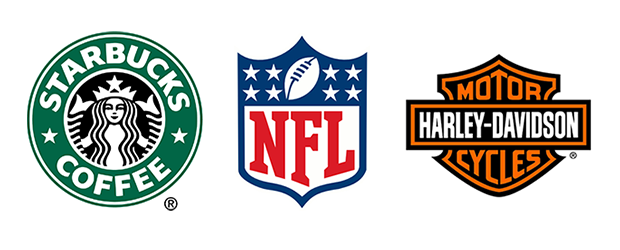
Learn more about How Much Does a Logo Design Cost?
3. Brand Style Guide
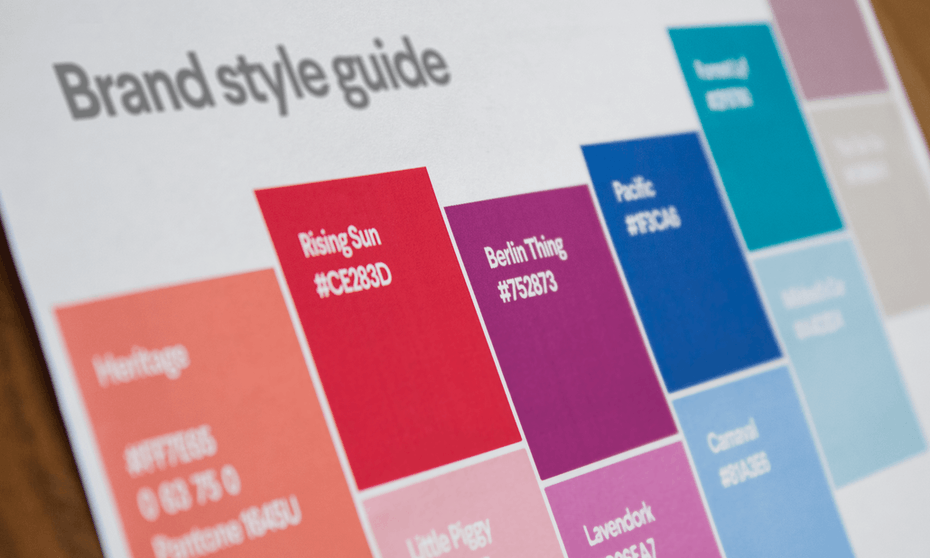
What is a brand style guide?
A brand style guide is a rulebook that explains how an organization presents itself to the world through its logo, font and color selections, photography and much more. Put another way, it’s a reference tool that helps maintain consistency in what a brand looks, feels and sounds like. It’s so powerful that some people even call it a brand bible, but don’t let that intimidate you—those are just different names for the same document.
Using a brand book ensures that your brand looks and feels the same, even when you have different people working on customer service, marketing, design and sales.
Why are brand guidelines important?
Think of your brand identity as your company’s personality. It’s how the world recognizes you and begins to trust you. If you see someone change how they look and act all the time, you won’t feel like you know who they are, and you certainly wouldn’t trust them.
Imagine a co-worker who always wears a dress shirt tucked into slacks, with his hair cut neatly short. Now imagine if that same person walked into work one day unshaven, wearing cutoff jeans and sporting a new tattoo of a tiger riding a motorcycle through flames. It’d probably feel uncomfortable because it’s not what you’re used to. You might even check in with him to make sure everything was okay.
The same logic applies to brands: inconsistency will confuse and alienate your customers. A style guide is important because it helps your business communicate in a consistent way across all teams and channels.
Your identity is your unique character that your clients want to see. The image of the brand that lives according to its own laws and grasps people’s attention with how special it is.
Brand style guides can lay out your brand voice, messaging, design principles and more in precise detail. They instruct your staff members and business partners on the exact language to use in different scenarios, what color schemes to incorporate into design layouts and how to most effectively communicate with your core audience.
The 6 essential brand guide elements we use
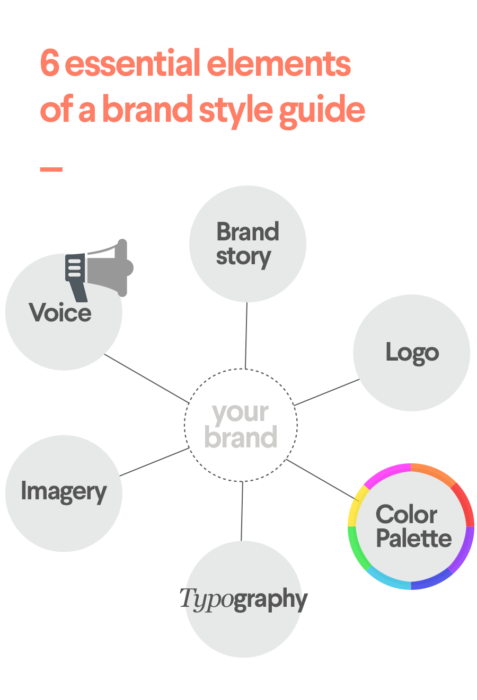
1. Brand story
Introduce your brand to the world. A simple summary will give people insight into the heart and soul of your company, which will help them understand how to represent your brand.
2. Logo guidelines
You may know what color your logo should be, but do you know how it’s going to look in different environments? This section of your brand style guide ensures your logo is used in the way you intended. It also prevents mistakes—like stretching, altering, condensing or re-aligning—that could send the wrong message.
3. Brand color palette
Speaking of colors, defining a brand palette will go a long way towards creating a consistent look and feel. Most brands choose four or fewer main colors and don’t stray too far from the hues of their logo.
4. Typography and font guidelines
Another big part of identity design is font selection. Your brand needs will dictate whether one typeface family will meet all your needs or if you want to define multiple brand fonts. A good rule of thumb is to use a different font than the one in your logo, since the contrast will help it stand out. A seasoned designer can guide you through this process.
5. Image guidelines
When it’s your company, you have a natural instinct for which photos and illustrations are right for your brand. The imagery section in your style guide will steer everyone else in the right direction without adding more approval to-do’s for you.
6. Brand voice
Writing style doesn’t always jump to mind when thinking of brand identity, but brand voice strongly affects how your audience feels about you.
Learn more about The Ultimate Guide to Brand Identity Style guides
4. Packaging & material design
The eternal classics, out−of−door advertising is a traditional way to promote your product.
Marketing or advertising a small business can be tricky!
And it’s also in the marketing or advertising of a business where costs can quickly skyrocket.
To effectively market your venture, you need to go to where your customers are.
There’s no point in advertising at a Trade Fair if you’re in the B2C (business to consumer) space.
Likewise, you don’t want to be doing a leaflet or flyer drop if you sell specialised business products.
Typical marketing materials that we end up designing include:
- Flyers and Leaflets
- Promotional Items and Giveaways
- PowerPoint Presentation
- Pitch Decks
- Brochures
- Exhibition Stands
- Adverts
5. Social media branding
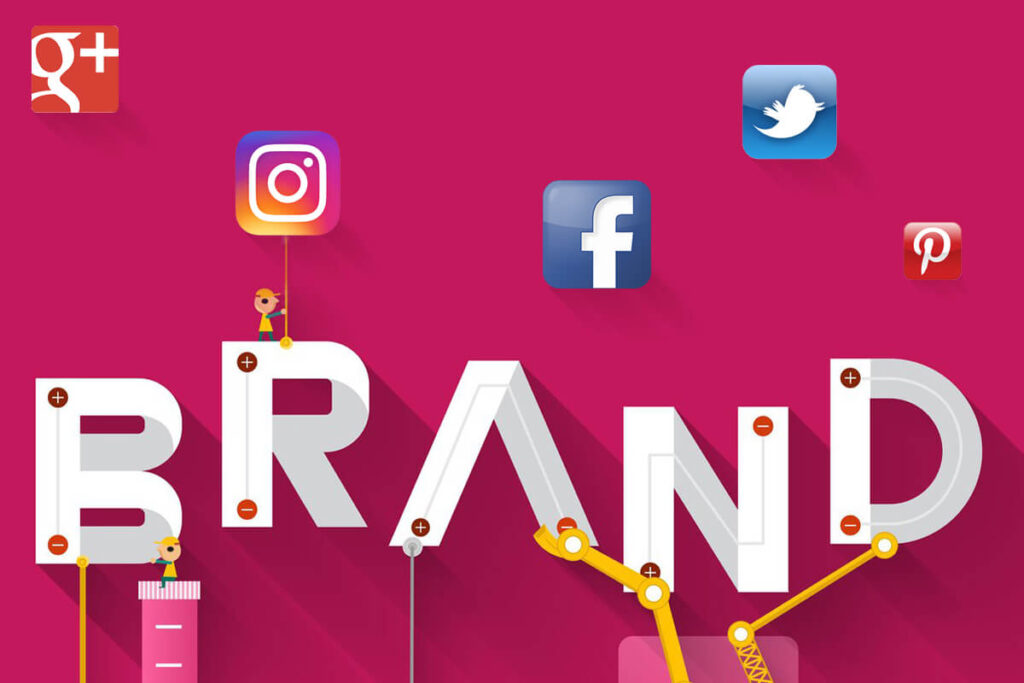
Many companies struggle with social media branding. On one hand, you want to have the same consistent branding across all channels. On the other hand, social media platforms like Twitter often lend themselves to more irreverent and playful content.
Businesses need to find a way to stay true to their brand messaging, voice and values while still taking advantage of social media’s inherent strengths. It’s a tricky balancing act, and a lot of organizations wind up falling flat on their face.
That’s why working with an expert branding agency can be so helpful. They have a keen understanding of what content works on different social media networks and how to effectively use those platforms without sacrificing brand integrity.
You are your brand. If you can’t clearly articulate what your brand stands for, then you’re probably going to struggle to convince prospective customers to buy from your business over the competition. Branding services can help you identify your core principles and package those values in a message that resonates with your audience.
6. Stationary Design
The amount of stationery design that you need is debatable.
A lot of business go “all in” and get every single thing designed at once.
That typically includes:
- Business Cards
- Letterheads
- Compliment Slips
- Invoices
- Quotes
- Proposals
- Contracts
That’s a whole load of design work to bite off in one go.
From Day One, I’d say that every brand has a need for business cards.
In business, you’re always meeting people. Whether you opt for a digital business card, or traditional printed card, you’ll always want to be able to give people something to remember you by.
Lately, we’ve been seeing the popularity of letterheads drop off. Not many letters are printed these days, and a lot of people just opt for their logo stuck at the top of a PDF.
It’s not as sexy, but it does the job.
Compliment slips have died the death. Only one in the last twenty of our clients have had those designed. They look good, but they’re not vital to the operation.
Invoices these days are typically generated by an automated system like Xero or Sage, so unless you have the money to go for a full HTML template, then you don’t need to worry about that.
Quotes and Proposal documents are an area I would normally advise our clients to invest in.
As they’re client facing documents, I firmly believe in giving potential customers the best brand experience possible. Having your Quote or Proposal document perfectly “on brand” is a great way to do that.
Contracts could go either way for me. Sure, they’re customer facing. But typically, they’re a pretty formal legal document with not a whole load of room for creativity.
Perhaps a nice front and back cover is the solution here!
Again, I want to reiterate, if you have a solid branding budget, you should make sure every single thing you put out is “on brand.” Your stationery design can help sell your business.
There’s no point skimping and saving if you don’t have to!
7. Digital content
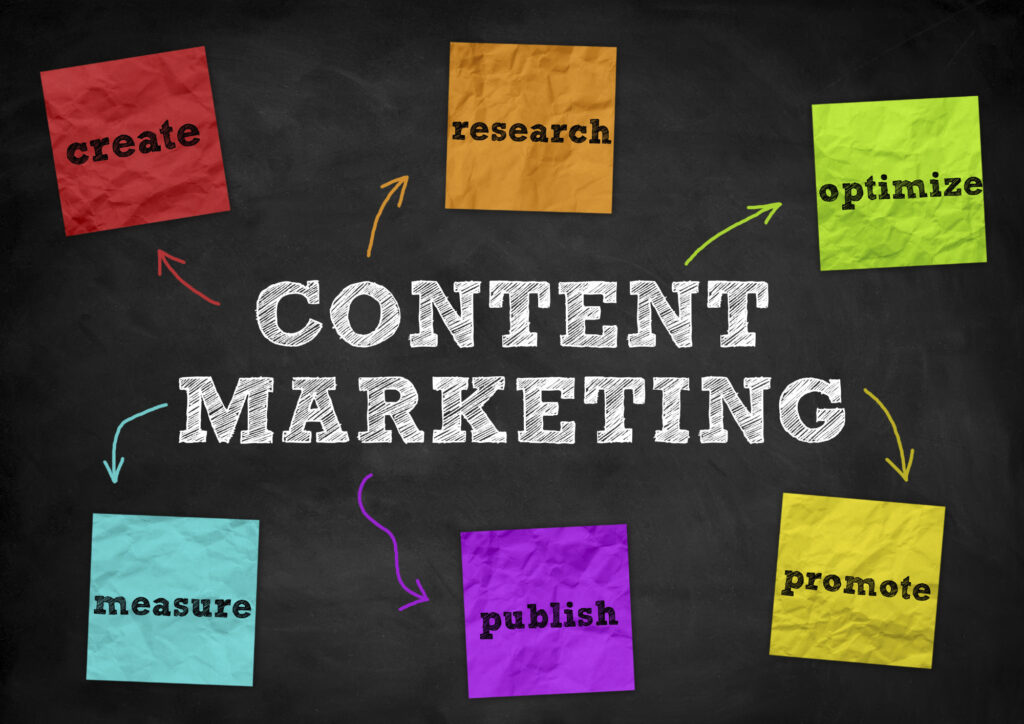
Digital content can be created by yourself, or by an agency.
What do we mean when we say digital content? Well, there’s:
- Social Media Assets
- Ebooks
- Whitepapers
- PDFs
Social media assets typically consist of logos and headers for use across a range of social platforms. You might also opt to have a post template designed too.
Your branding agency will typically provide your logo files to you at the end of a project, so you can either get them to make the social squares, or upload them yourself.
Ebooks, whitepapers, and PDFs form an important part of our digital marketing strategy and can be quite tricky to create on your own. So I recommend getting help here.
If you’re fairly confident in your own design like abilities, give Canva a whirl. You can probably do what you need to for social media on there.
However, when it comes to creating good lead magnets (like ebooks), it’s important they’re “on brand” as they’re going to be landing directly into your customers inbox.

